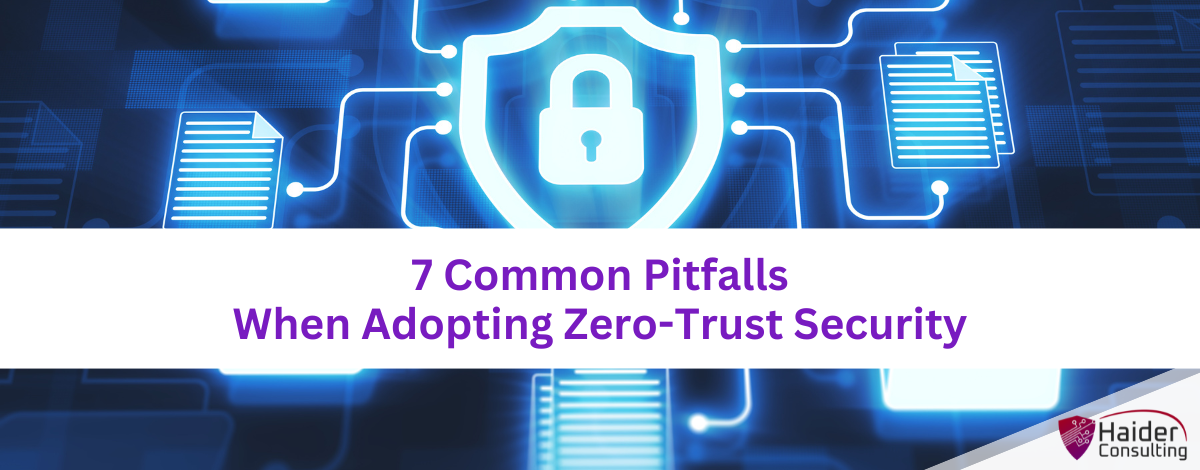Zero Trust security is changing cybersecurity by moving away from the old perimeter-based approach. In Zero Trust, every access attempt is checked every time before allowing connection to any resource.
One interesting fact from Statista is that 56% of organizations worldwide now see adopting Zero Trust as a top or high priority.
This method greatly improves security, but switching to it can be tricky and has some common problems. These problems can negatively affect a company’s cybersecurity.
We will look at these common challenges and provide tips on how to successfully implement Zero Trust security.
Understanding Zero Trust Security: Back to Basics
Zero Trust abandons the old “castle and moat” approach where everyone within a network is automatically trusted. Instead, it treats every user and device as a potential threat—even those already inside the network. This might seem harsh, but it ensures a strict “verify first, access later” method.
Here are the fundamental aspects of Zero Trust:
- Least Privilege: Users are only granted access to the resources necessary for their specific roles, nothing more.
- Continuous Verification: Authentication is a continuous process, not a one-time event. Access rights for users and devices are constantly checked.
- Micro-Segmentation: The network is broken down into smaller segments to contain and limit damage in the event of a breach.
Understanding Common Zero Trust Adoption Mistakes
Implementing Zero Trust is more than just purchasing a solution—it’s a comprehensive approach that involves a shift in how your organization views security.
1. Zero Trust Is a Strategy, Not a Product
It’s easy to think of Zero Trust as something you can buy because some vendors market it that way. However, Zero Trust is a security strategy that involves changing the way your organization thinks about security. It uses a variety of tools and approaches, such as multi-factor authentication and advanced threat detection, to protect your data.
2. Beyond Just Technology
While technology is crucial to Zero Trust, it’s not the only component. Successful implementation also depends on people and processes. That’s why it’s important to educate your team about Zero Trust principles and integrate these into your organizational culture. Update your policies and train employees to ensure that everyone plays a part in your cybersecurity efforts.
3. Over-Complicating Things
Start small instead of trying to implement everything at once, which can be daunting, especially for smaller organizations. Begin with a pilot program that focuses on the most critical areas, then gradually expand your Zero Trust deployment.
4. Hurting the User Experience
Ensure that the security measures you implement, such as multi-factor authentication (MFA), do not overly complicate things for legitimate users. Strive for a balance that maintains security without hindering user experience. Use change management strategies to facilitate this transition smoothly.
5. Skipping Security Inventory
Before implementing Zero Trust, make sure you know exactly what needs to be secured. Take inventory of all devices, users, and applications. This step is crucial for identifying potential access risks and planning your security strategy effectively.
6. Don’t Overlook Legacy Systems
Make sure you protect older systems during your transition to Zero whose security may not meet current standards. Include these systems in your new security framework, or plan for their secure update or replacement. Leaving them out can expose your entire network to potential breaches.
7. Manage Third-Party Access Carefully
Third-party vendors often need access to your network, but they can introduce security risks. It’s important to define and enforce strict access controls for these vendors and regularly monitor their activities. Consider setting access that expires after a certain time to further enhance security.
Keep in Mind: Zero Trust is a Process
Creating a strong Zero Trust environment doesn’t happen quickly— it takes time and effort. Here’s a few things you should to keep in mind:
- Set Achievable Goals: Don’t rush the process. Set realistic goals, recognize small victories, and steadily progress.
- Monitor Continuously: Security threats are always changing. Keep an ongoing check on your Zero Trust setup and tweak your methods when necessary.
- Train Your Employees: Make sure your staff is informed and involved. Regular security training is essential to help them understand and support your Zero Trust strategy.
Benefits of a Secure Future Through Zero Trust
By avoiding common mistakes and taking a strategic approach, your business can gain significant benefits from Zero Trust security. Here are the advantages you can expect:
- Stronger Data Protection: Zero Trust limits access to sensitive data, reducing the impact of any breach.
- Better User Experience: Efficient access controls mean a smoother operation for those who need access.
- Greater Compliance: Zero Trust helps meet various industry regulations and compliance requirements.
Ready to start with Zero Trust security? Arm yourself with knowledge, carefully plan your strategy, and steer clear of typical errors. This will enhance your security measures and make your business more robust against cyber threats.
Book a Zero Trust Cybersecurity Assessment
Zero Trust is now a key expectation in global security. Our cybersecurity experts are ready to help you implement it effectively. It’s an ongoing journey toward a safer future, and we’re here to guide you every step of the way.
Contact us today to schedule your cybersecurity assessment and begin your journey.
Book My 17-Minute Call





